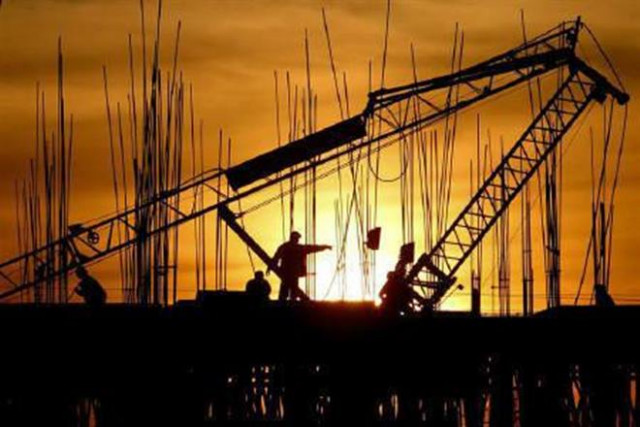Provinces should look for creative ways to finance infrastructure projects
Until EOBI is devolved, long-term equity financing by provinces may not be viable

Representational image. PHOTO: REUTERS
However, little known is the fact that the 18th Constitutional Amendment plays an indirect but nevertheless a very important role in infrastructure programming and budgeting.
According to the 18th Amendment, the share of provinces may be increased, but cannot be decreased from the share fixed in the last National Finance Commission (NFC) Award. This means that the federal pool will decrease with time.
As the federal government is responsible for debt servicing and infrastructure spending besides financing defence expenditures and pensions, it implies that the central government will be left with fewer funds for infrastructure development as it can’t default on loan repayments nor slash defence spending.
However, if pet projects of parliamentarians are not given the go-ahead to oblige special-interest groups and campaign coffers, it will affect odds of their success in the next elections. Performing this high-wire balancing act is no way an easy task unless the government widens its tax base considerably.
With a cash-strapped Planning Commission, it becomes imperative for provinces to find a creative mechanism for financing their infrastructure projects. By virtue of entry No 10 in the Federal Legislative List (FLL) Part-I, raising public debt and foreign loans remains a federal subject whereas its supervision and management falls within the purview of the Council of Common Interests (CCI). So the question is: how can provinces finance public infrastructure using debt or equity or a combination of both?
Infrastructure maintenance
Before cracking the infrastructure financing conundrum, we need to understand that infrastructure is also an expense and not just an asset as high maintenance costs make every project an ongoing obligation. So, projects should guarantee revenues (such as road tolls) that at least cover operation and maintenance (O&M) costs as well as annual interest payments on debt.
In principle, the project should meet principal payments on the debt as well but such an expectation may be far-fetched as historically low level of tax collection by provinces may put the project’s cash flow at risk. It is thus apparent that debt financing alone isn’t viable and could only be used to close small funding gaps.
The lion’s share of financing has to come from equity markets and the long-term nature of infrastructure projects means that pension funds could potentially invest in such projects.
The biggest hurdle in this regard is that the federation continues to retain Employees Old-Age Benefits Institution (EOBI) funds, though the subject of invalidity and old-age pensions was previously on the concurrent list (entry No 26) that has been abolished.
EOBI won’t be effectively devolved till 2020 and the Ministry of Finance has been reportedly involved in borrowing from the fund for meeting its unseen operational expenditures. Until the EOBI is devolved and is managed by provinces, indigenous long-term equity financing by provinces may not be viable.
Roads and highways
The subject of ‘national highways and strategic roads’ is covered by entry No 34 in Part-I of the FLL and the National Highway Authority (NHA) is given the mandate for planning, development, repair and maintenance of roads and motorways. NHA awards lucrative contracts of O&M and toll collection from roads and motorways to other federal entities such as the Frontier Works Organisation (FWO).
Unlike railways that is a subject of the CCI, it seems that the central government alone will claim revenues from road infrastructure – though provincial governments may finance such projects.
However, entry No 34 should not be read in a restricted sense and should be given the widest possible meaning. Emphasis should be given on the part ‘national’ which means that the federal legislature can only regulate roads that operate beyond territorial boundaries of a province.
So, if the Punjab government aims to connect cities of south Punjab, it has the right to claim all toll revenues if the provincial assembly passes a relevant piece of legislation.
Provinces need to formulate the infrastructure development roadmap by preparing an infrastructure taxation bill and a public-private partnership policy that may also consider granting long-term tax credits to investors.
It may be followed by the establishment of provincial highway authorities, pension fund institutions and insurance companies whereas a special purpose vehicle (SPV) approach may be used for corporate governance of project entities. These project vehicles may be partially owned by respective local governments to allow true devolution of powers.
The writer is a Cambridge graduate and is working as a strategy consultant
Published in The Express Tribune, November 12th, 2018.
Like Business on Facebook, follow @TribuneBiz on Twitter to stay informed and join in the conversation.



















COMMENTS
Comments are moderated and generally will be posted if they are on-topic and not abusive.
For more information, please see our Comments FAQ